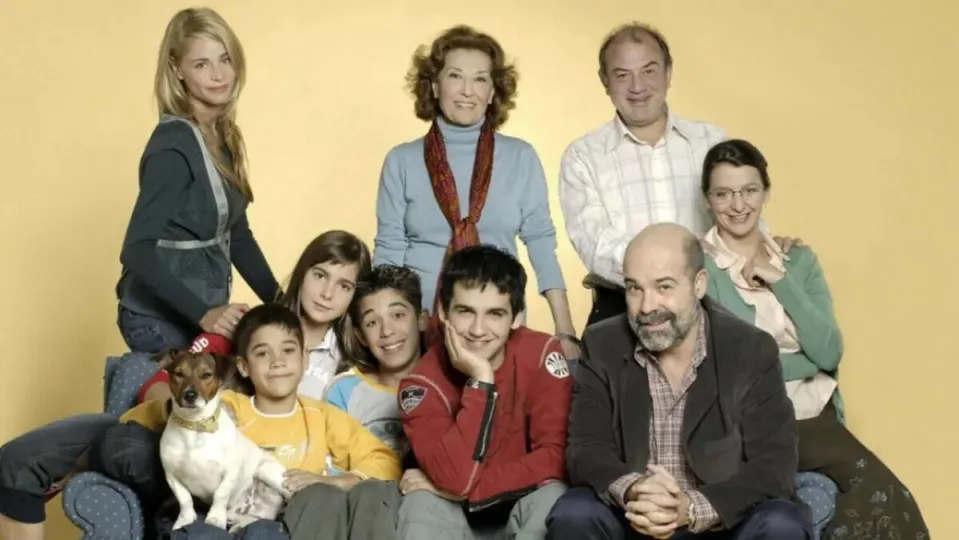When I was eleven years old, back in 2006, my musical references were based on the pop music of the time in Spain: La oreja de Van Gogh, Estopa or El Canto del Loco were the backbone of a belief system that would soon open up to much more. But, at the time, I could barely guess between two or three songs from each of them. The ones I could not avoid as they were playing all day long in radios, televisions, etc.
But there is a group of which I knew each and every one of their songs, I repeated them on loop and sang them with my sixth grade classmates: Santa Justa Klan. From A toda mecha to Soy la caña, passing through their version of Adiós Papá by Los Ronaldos and Qué buena está la profesora de inglés -which I remember playing to our ESO teacher… those were other times-, the group synthesized the spirit of being a pre-adolescent at the time. Just like the series it came from, Los Serrano, it perfectly reflected the Spain of the 2000s.
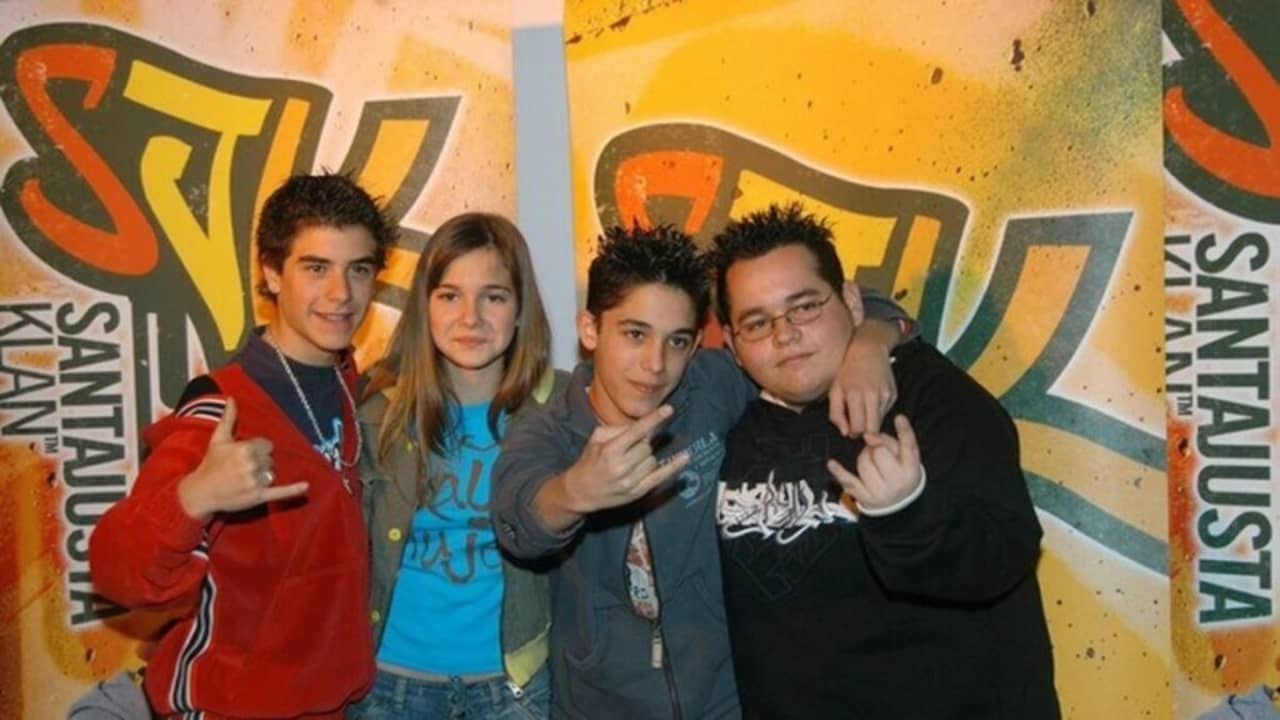
A 21st century family
Los Serrano, currently on Amazon Prime Video, is a series created in 2003 by Daniel Écija (7 Vidas, Aída) and Álex Pina (Money Heist, Sky Rojo). The star couple carried out this production for Telecinco, which remained in prime time for 8 seasons and a whopping 147 chapters. It did so with several ups and downs and a disastrous ending that has been remembered for years, but conquering the audience thanks to characters created with as much heart as flaws.
The fiction had a premise that was already novel for the time, especially if we remember that we were coming from a 20th century in which anything went and we were embarking towards the 2010s, full of correction and where morality rose above the previous prototypical brusqueness.
In the series, Diego Serrano, who became a widower a few years ago, marries Lucía, a divorcee, after they meet again years after they were childhood sweethearts. Together they move into Diego’s family home in Madrid with their five children: Diego’s three and Lucia’s two.

Together they begin to live together and the point of view is divided among three generations: the adults with their problems as parents, the youngsters with their first dabbling with love and parties, and the youngest with their day-to-day life at school. It was, therefore, a series for all audiences: that is, each part of the family cared about its own.
This diatribe between modernity and tradition was perfectly summarized by the characters. On the one hand we had Lucía (Belén Rueda), Eva (Verónica Sánchez) and Teté (Natalia Sánchez), three women -a mother and her two daughters- from Barcelona, refined, cultured and independent, who showed the Spain of the future.
On the other hand, we had the “original” Los Serrano: Diego (Antonio Resines), Marcos (Fran Perea), Guille (Víctor Elías) and Santi (Jesús Bonilla). A bunch of classic Madrid’s “cafres”, who despite their different ages were doomed to follow the tradition of “Españita”: soccer, jamón serrano -in fact they had a tavern- and shouting everywhere. Little Curro (Jorge Jurado) served as the narrating nexus in his profound innocence, although he soon came out on his side of the scale as well.

Plots for all
Although the first season laid the foundations for the series, as usually happens with these fictions, it soon began to opt for new plots and characters. Actors such as Antonio Molero, Fiti in the fiction, so captivated the audience that they ended up becoming the main characters. And we even got to experience the great rise of Javier Gutiérrez in the last seasons of the series.
With characters so wicked but with so much heart, Los Serrano soon won over the public, and their misadventures became more and more viral. Without fear of anything, the series went through all the topics that were becoming fashionable in the early 2000s, getting into many controversies during its time.
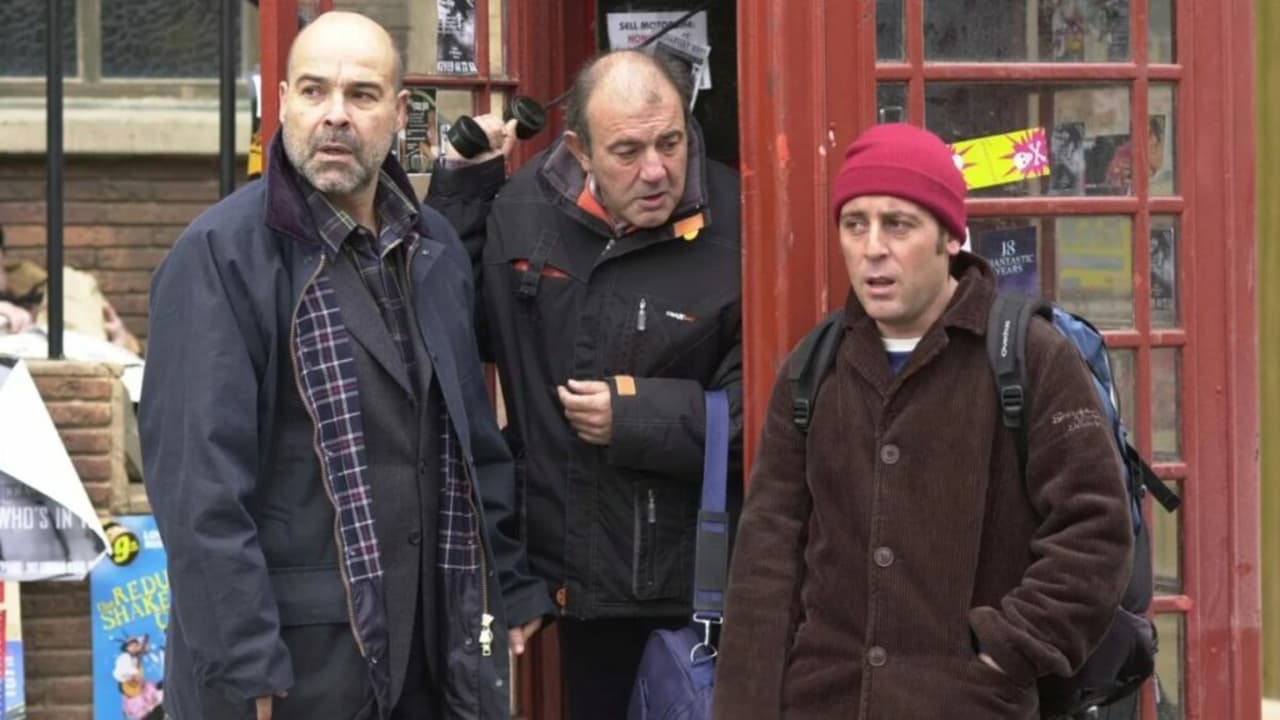
Although at times there were some jumps in tone that made its fans scream to the skies, in general it remained fairly regular and, although some of its main characters were falling -Fran Perea, Verónica Sánchez and Belén Rueda stopped appearing, each justified in a different way-, it remained quite worthy until its end.
Thanks to the good work of Écija and Pina, in fact, not only Gutiérrez made a place for himself in Spanish cinema and television, but others such as Alejo Sauras or Alexandra Jiménez, initially recurring secondary characters, gained power and ended up with a very fruitful career outside the series.
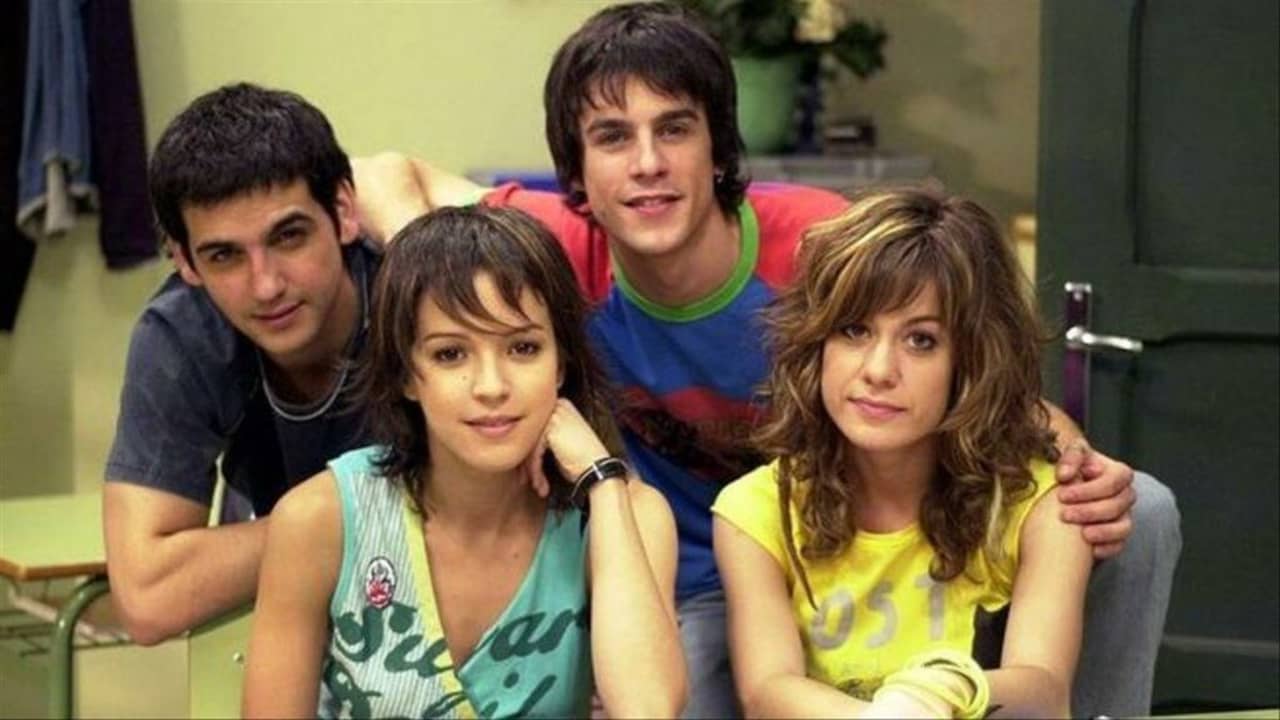
Our own Lost
Los Serrano was also our own Lost. Although it didn’t have any sci-fi elements or the usual cliffhanger of J.J. Abrams and Damon Lindelof‘s series, the Spanish series began to pull too many plot twists that made it get lost along the way.
Lucía died, leaving Diego a widower for the second time, Teté and Guille got involved with each other -as their older siblings had done at the beginning- and even little Curro became a petty criminal. Therefore, when the series had to end, the scriptwriters were in trouble: how could they generate a round ending that would put everything in its place?

Easy: it would all be a dream. With no other way out, they decided that the end of the series would end right where it began: the morning after the wedding, Diego wakes up and realizes that he has dreamed it all. Thus begins a new life as a family, with his wife alive, his young children uncorrupted and everything in its place.
Thus, on July 17, 2008, the series ended with a mythical scene that we all remember: dressed as children but now grown up, the children of Diego and Lucia meet for breakfast as at the beginning of the series. It seemed that nothing had happened and that’s how they wanted to show it, but evidently it was not so, and the seams were quickly seen.
Remembered as one of the worst endings in history, the conclusion of Los Serrano was quite curious and raised some controversy in its day. However, at least it was remembered by everyone, and despite not making much sense, it was seen as a fun resource that is still alluded to today.
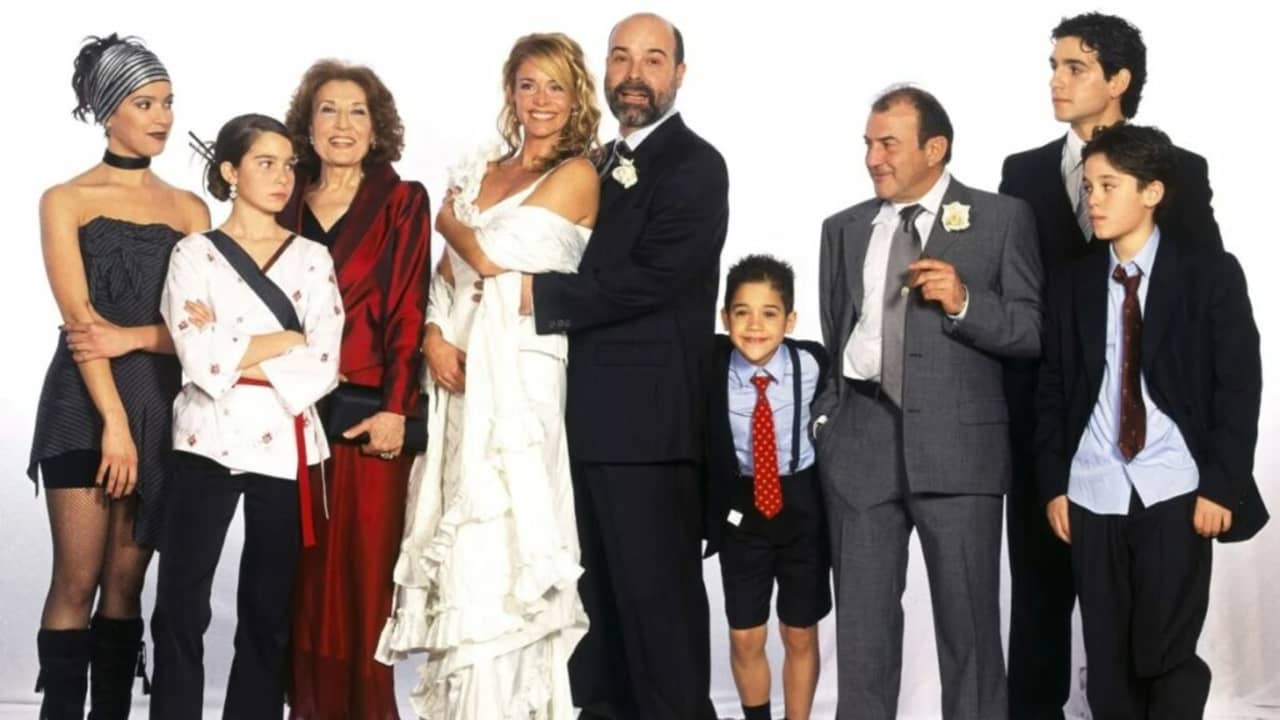
Music as a link
As I warned at the beginning, one of the most striking ingredients of the series was its use of music. The well-remembered introduction to the episodes was the song Uno más uno son siete, composed by Mikel Erentxun but performed by Fran Perea, Marcos in the series.
As a budding singer-songwriter, Fran Perea’s character was building his own musical career throughout the series. Both the series and the singer fed back, as his music was the usual soundtrack, and themes such as La chica de al lado or La vida al revés were the backbone of the structure of Los Serrano.
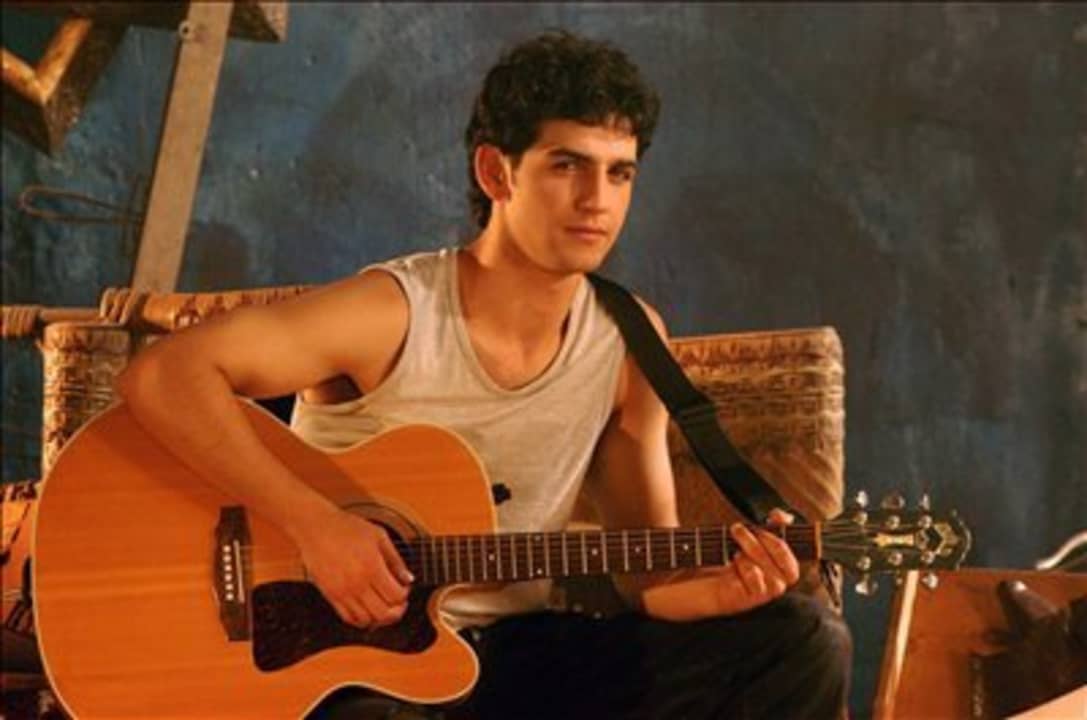
But Fran Perea was not the only musician, far from it, who played an important role in the series. For a time, Los Serrano also served to boost the career of El sueño de Morfeo, a group that came to represent our country in Eurovision, as the singer Raquel del Rosario appeared as Marcos’ girlfriend for a time.
And, of course, when they got fun, they formed Santa Justa Klan, a group that I have already mentioned above, but which was aimed at a young audience and sought to enter the postureo rap trend that marked those unenviable 2000s.

An unprecedented international success
In spite of having been a summary of Spain in the 2000s and serving as a generational portrait, Los Serrano had a very interesting presence outside our country. The original version was broadcast in dozens of countries, from northern and eastern Europe such as Serbia, Slovenia, Bosnia, Montenegro and Finland -where it was a real phenomenon- to all of Latin America.
In addition, several versions of the series were made in other countries: in Portugal it was called Os Serranos, in Italy I Cesaroni, in Serbia Sindelici, in Greece Ευτυχισμένοι μαζί, in Turkey Ilk Aksil, in Slovenia Česnovi, in Bulgaria Nie, nashite i vashite, and in Czech Republic Horákovi.
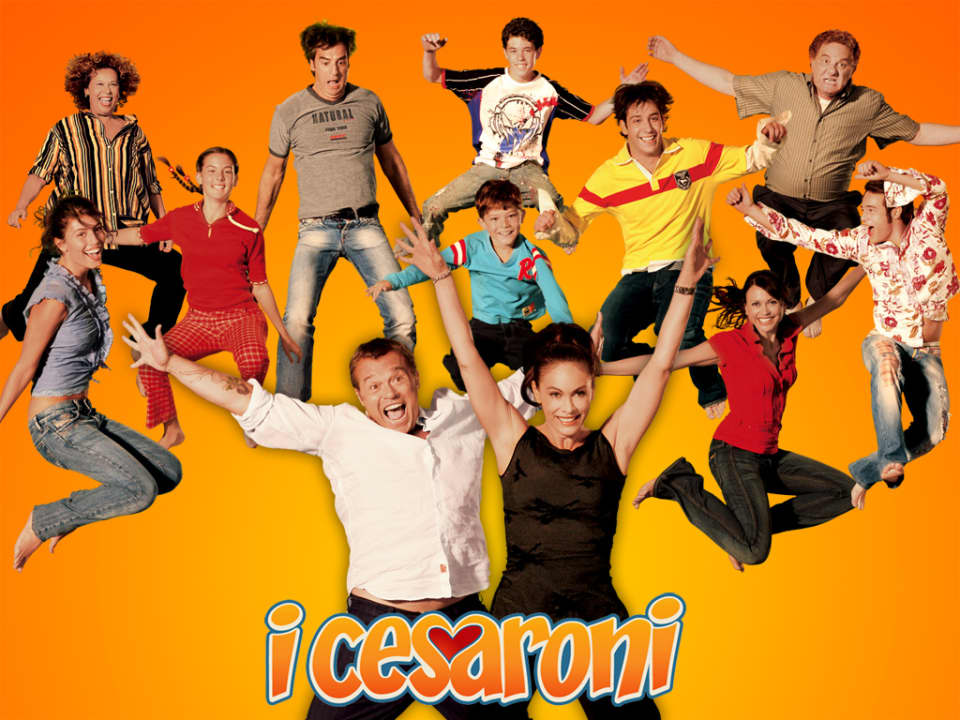
Undoubtedly, Los Serrano was an unprecedented success that made clear the good work of Spanish fiction, and served as a precedent for everything that came after. Evidently, the success of Money Heist would not exist without Los Serrano.
Some of the links added in the article are part of affiliate campaigns and may represent benefits for Softonic.
